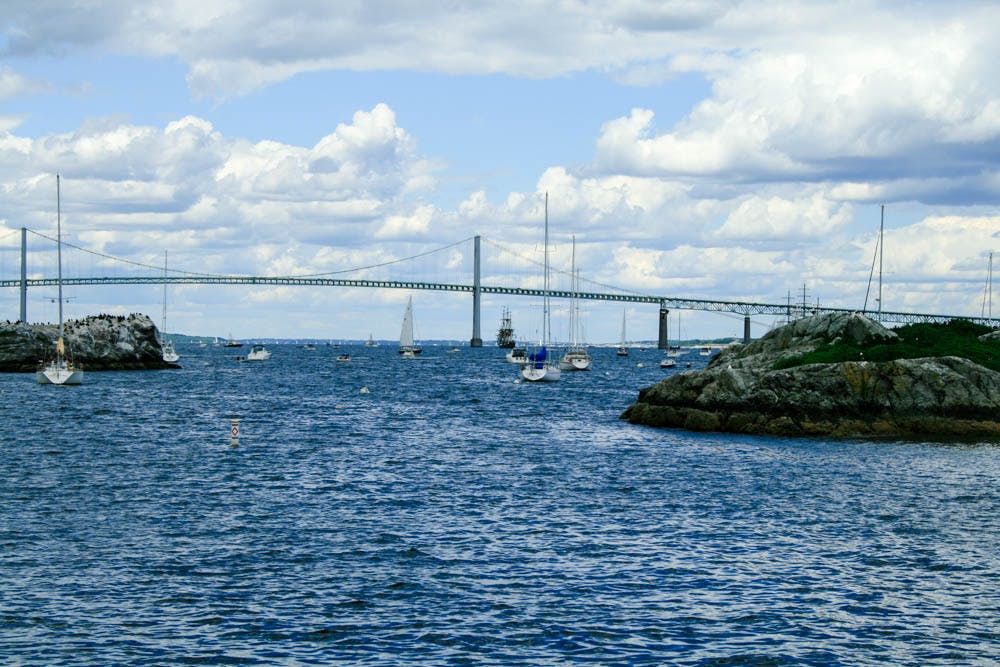Wastewater treatment plants certainly have enough sludge, but they’re in need of an essential commodity: energy.
The Narragansett Bay Commission, operator of two wastewater treatment plants in Rhode Island, decided to turn their “sludge,” or the byproduct of wastewater treatment, into energy, said Jamie Samons, public affairs manager of the Bay Commission. Within the month, a biogas generation facility will begin to convert waste into power, she said. This step comes two years after the Bay Commission set a goal to be 100 percent renewable by 2020, following net metering laws that allowed organizations to receive renewable energy credits for green energy produced off-site.
Wastewater treatment plants can be “one of the most energy-intensive facilities in a given city,” Samons said. It’s estimated that moving dirty water accounts for 1 percent of the nation’s energy, according to Curt Spalding, former Environmental Protection Agency administrator for New England.
One way to alleviate the carbon footprint associated with wastewater treatment plants is to take the methane produced by sludge, which was previously released or used as heat, and turn it into fuel for the plant itself. Sludge creates methane when heated in an oxygen-free environment, Spalding said, and the methane is scrubbed of any toxins and then burned to create energy for the plant.
At Bucklin Point, the smaller of the Bay Commission’s two plants, an $8.2 million implementation of the biogas generation facility will provide one quarter of the energy the plant needs to function, Samons said. The other treatment plant does not yet have the technology necessary to capture the potential energy of biogas.
“There is a need for very, very rapid deployment of renewables into the grid to solve the climate problem, or to help slow down the climate problem,” said Stephen Porder, associate professor of ecology and evolutionary biology. “In some ways, it’s easier for one organization to decide to buy a whole bunch of solar panels than it is for millions of individuals to band together to do the same thing. …We have very, very little time left.”
Besides the environmental benefits of turning sludge into energy, the Bay Commission itself will eventually save money on energy expenses. Currently, it spends $12 to $15 million a year on electricity — a cost that will drop to practically nothing once capital costs are paid, Samons said.
“Electrical prices can be incredibly volatile,” he added. “The fact that we’re creating our own energy lets us have greater stability in what we expend for energy because the expenditure is wrapped up in those capital costs.”
At the University, the Transition to Renewable Sources of Energy committee is exploring investments in renewable infrastructure, mirroring the Bay Commission’s renewable energy initiative, Porder said. After meeting throughout the fall, the energy committee plans to put out a call for developers to propose renewable projects that the University could implement.
“The administration is very supportive of the idea and really wants to do their utmost to do what is both economically good and environmentally good,” Porder said, adding that the committee hopes to sign up for purchasing renewable-generated electrictiy in the next six months.
The University’s carbon footprint will drop because of the Bay Commission’s commitment to diversifying energy sources, Spalding said. “The fact is, every time someone flushes a toilet at Brown, it goes to (the Bay Commission’s) facility,” Spalding said. “It’s fortunate that the Bay Commission decided to be a leader and reduce their emissions.”
The Bay Commission’s commitment to renewable energy extends beyond their conversion of sludge. After investing in three wind turbines in 2012, which directly produced 40 percent of the power needed for the Fields Point facility, the agency decided to invest in the construction of three more wind turbines off-site. Two five-megawatt solar facilities will also go online this year, completing the 100 percent renewable energy mosaic pieced together by the Bay Commission. Once complete, the agency will be powered by over 50 percent wind, 8 percent biogas and 30 to 35 percent solar, she added.
Even after the renewable energy initiatives are completed, wastewater treatment plants may still be able to reduce wasted energy and emissions even further, Spalding said. Currently, after the sludge is processed, it is incinerated in Woonsocket, releasing emissions like mercury into the air. The Bay Commission may be able to prevent this discharge by “pelletizing” the sludge and selling it as a low-nitrogen fertilizer instead of burning it.
“There’s better ways to manage sludge than burn it,” Spalding said. “That, I think, is their next big challenge. They’ve done a great job looking at the energy they’re using.”





